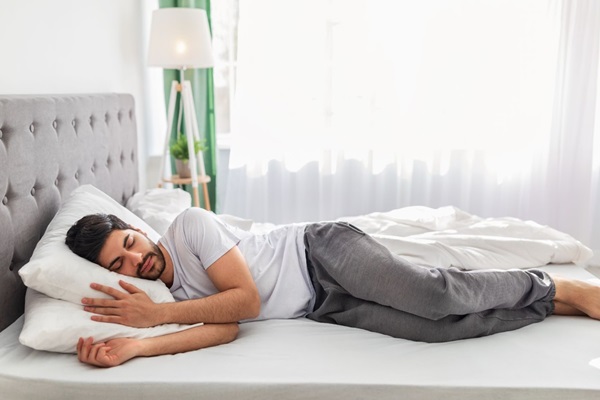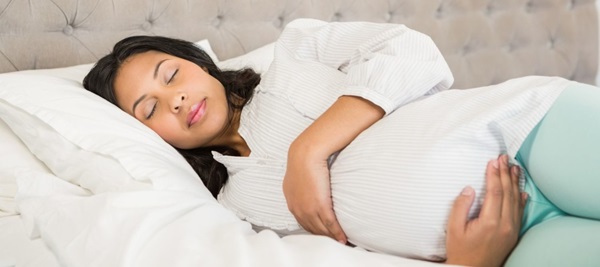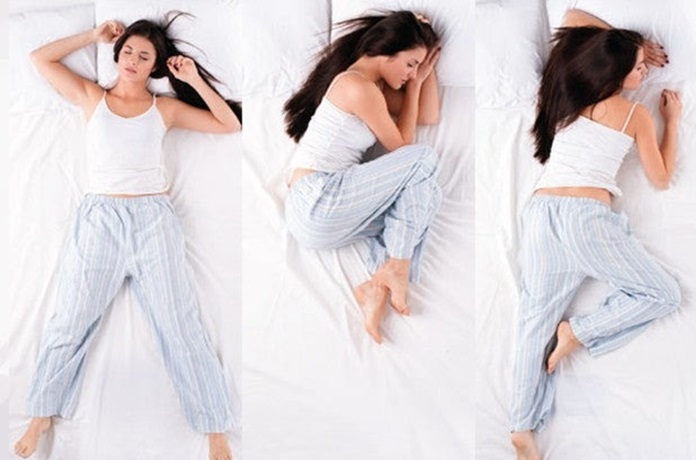We spend a significant portion of our lives sleeping or resting, so it’s important to choose a sleep position that helps your body recover physically. A good sleep position can ease the strain on your spine, but a bad one can worsen pain or stiffness in your back, arms, or shoulders, making your sleep less restful. Various sleeping positions have unique advantages.
If you’re dealing with pain or health problems, adjusting your position could help alleviate them. Although it might not happen overnight, experimenting with different sleep positions is certainly worthwhile. Taking the time to adjust to a new sleeping position gradually could be the key to improving sleep quality.
Types of Sleeping Positions
Fetal position
The fetal position involves sleeping on your side with bent legs curled in toward your body. It’s the most popular sleeping position — and for good reason. Not only is it great for lower back pain or pregnancy, but sleeping in the fetal position can also help reduce snoring.
The fetal position involves lying on your side with your legs bent and curled towards your body. It’s most common position which not only alleviates lower back pain and is beneficial during pregnancy but can also aid in reducing snoring.

However, there are some drawbacks to sleeping in the fetal position. Make sure to maintain a relaxed posture; otherwise, the snug position could restrict deep breathing during sleep. Similarly, if you are dealing with joint pain or stiffness, curling up tightly in the fetal position may result in morning soreness.
Side Sleeping
Sleeping on your side is similar to the fetal position, but without pulling your legs in towards your body. Side sleeping also has several benefits including decreased snoring, improved digestion, and potential relief from heartburn.

However, side sleeping isn’t always beneficial as it can result in shoulder stiffness and jaw tightness on the side you’re lying on. Putting a pillow between your lower legs can aid in aligning your hips, thereby reducing the risk of lower back pain.
Stomach Sleeping Position
Sleeping on the stomach may feel comfortable for some people, but it’s generally considered the least ideal sleeping position from a health standpoint. It has limited benefits like reducing snoring or sleep apnea.
However, sleeping on your stomach position for a long time can strain your neck and spine, leading to discomfort and potential long-term issues. It can also lead to wrinkles and skin aging, as your face is pressed against the pillow for extended periods.

Putting a soft pillow under your lower belly can help alleviate some of the back pain associated with this position.
Flat On Your Back
Sleeping on your back has the most health advantages like it safeguards your spine and may alleviate hip and knee discomfort. This position uses gravity to maintain your body in a balanced alignment over your spine. Sleeping in this position may aid in minimizing unnecessary pressure on your back and joints. Placing a pillow behind your knees is the best idea to support the natural curve of your back.
On the contrary, sleeping on your back may pose challenges for individuals who snore or have sleep apnea. This position may not be good for those with back pain, underscoring the importance of ensuring proper support.
Also read, Are You Struggling to Fall Asleep? Here Are 8 Methods You Can Try Tonight
What is the best sleeping position for Back Pain?
The best sleeping position for alleviating back pain is lying on your side and putting a pillow or folded blanket between your knees. Similarly, This position can also help to relieve individuals with neck or back pain.
Get a pillow with a loft or thickness that matches the space between your neck and shoulder. A thicker pillow helps to keep your neck in line with your spine while you sleep on your side, prevent pain, and make sure your body stays straight.
Sleeping Position For Neck Pain
The best sleeping position to ease neck pain is lying on your back as it helps to prevent your neck from getting misaligned like it might if you slept on your side or stomach. To avoid neck pain, use a pillow that supports the neck while letting your head sink deeper. Memory foam pillows with a hollow can be the best option for your head. Alternatively, you can also use a towel by rolling it up under your neck and use a flatter pillow for your head.

When you are sleeping on your back, try to keep your arms in similar positions. Having both arms by your sides is preferable to having one arm resting on your forehead, as it can lead to spine misalignment and shoulder or neck discomfort.
Best Position to Sleep for a Stuffy Nose
If you are dealing with allergies or a stuffy nose, try using pillows to elevate your upper back slightly, creating a more upright position without straining your spine. This positioning can help keep your airways open and might aid in clearing your nose. It’s best to avoid lying completely flat on your back, as this could worsen nasal congestion.

What Sleeping Position is Best for Pregnancy?
During pregnancy, it’s best to sleep on your side with your knees. Side sleeping helps to alleviate the pressure from your growing belly, allowing your heart to pump and blood to flow easily throughout the body. Likewise, sleeping on your side is particularly recommended as it prevents pressure on the liver and promotes healthy blood flow to the baby, uterus, kidneys, and heart.

If you feel uncomfortable sleeping on your left side during your pregnancy, you can switch to your right side occasionally to ease pressure on your left hip. You can also place pillows under your belly, between your legs, and at the small of your back to relieve discomfort.
Frequently Asked Question
What are the best sleeping positions for neck pain?
The best sleeping positions for neck pain include back sleeping (supine position) with a supportive pillow under the head and neck, and side sleeping (lateral position) with a pillow between the knees and a thicker pillow to support the head and neck.
How do I know which sleeping position is best for me?
The best sleeping position for you depends on factors such as comfort, spinal alignment, and any specific issues you may be experiencing, such as neck pain.
You may also like to read, Insomnia Pregnancy: A Comprehensive Guide to Overcoming Sleep Challenges
